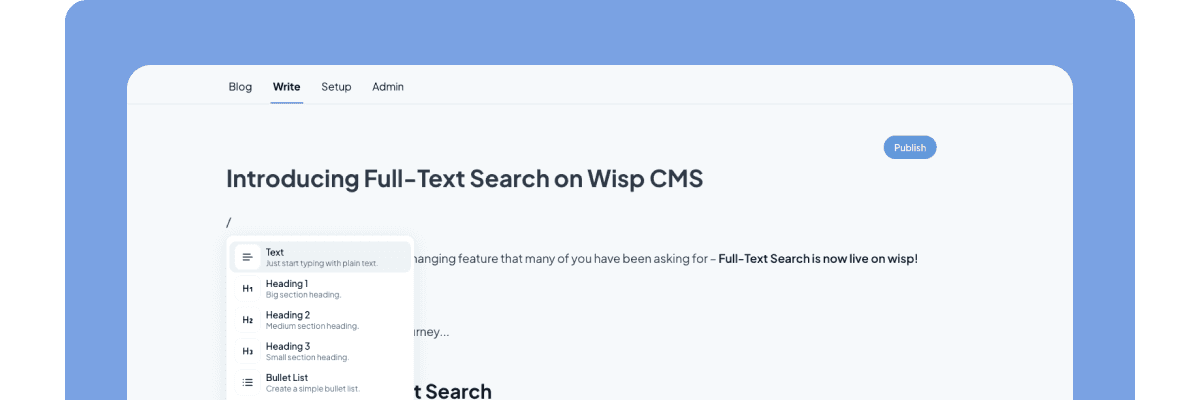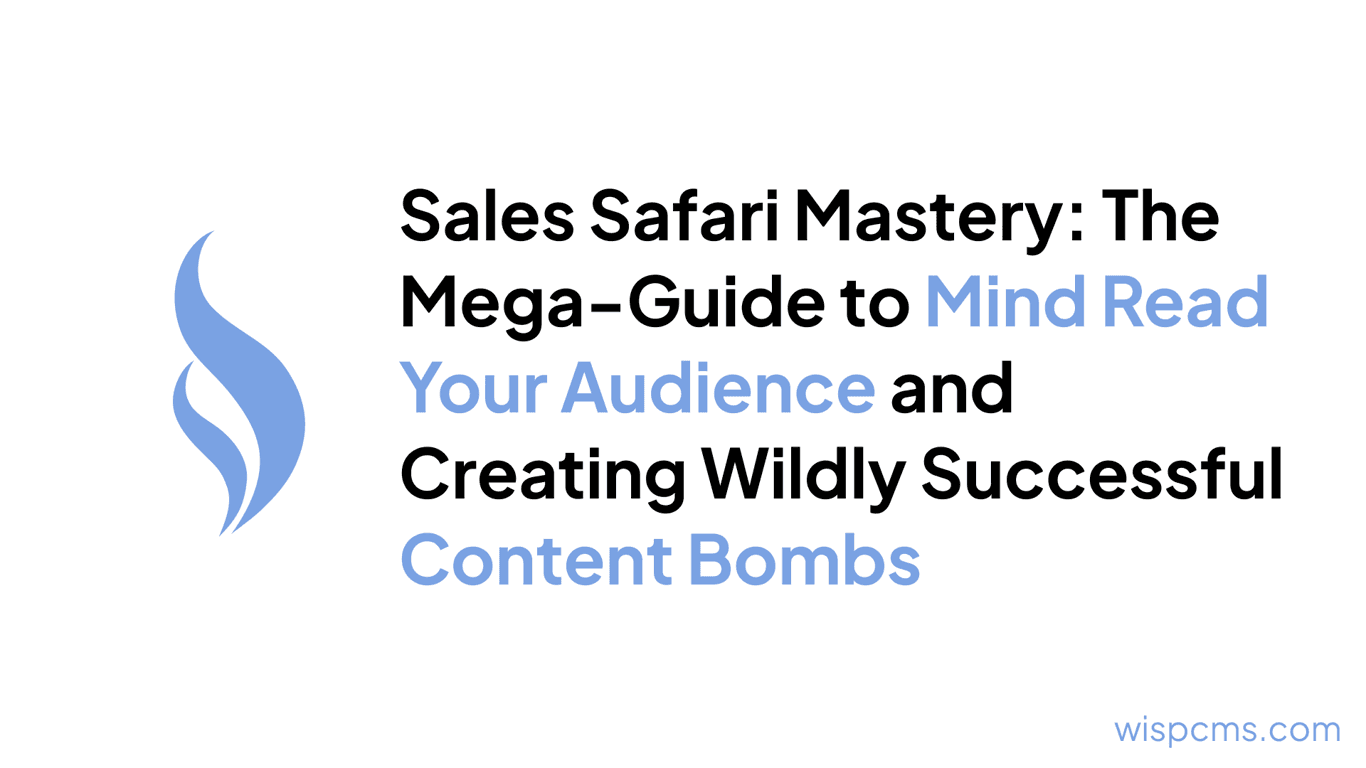
You've spent countless hours and resources developing what you believe is a groundbreaking product or service. Yet, after the grand launch, there is no flood of customers rushing in as you expected. This scenario is an entrepreneur's nightmare, encapsulated in the question: What if you build it, and they don't come?
This article aims to tackle this crucial question by introducing a powerful audience research method known as Sales Safari.
Understanding your audience is the bedrock of any successful venture. In an age where customers are inundated with options, knowing what they genuinely need, their pain points, and their language can set your offering apart. This is where Sales Safari comes into play. In this article, we'll explore what Sales Safari is, why audience research is critical, and how to effectively use this technique to ensure that what you build is precisely what your audience is seeking.
What is Sales Safari?
Origin and Concept
Sales Safari is an audience research method pioneered by Amy Hoy and Alex Hillman. Initially developed as part of their 30x500 course, the technique draws heavily on principles from design ethnography. The term 'Sales Safari' itself suggests an adventure into the wilds of the internet to observe your target audience in their natural habitats—the forums, social media groups, and other online communities where they freely express their thoughts, problems, and needs.
Unlike traditional methods, which often rely on direct interactions like surveys or cold calls, Sales Safari emphasizes passive observation. The goal is to identify customer pain points, desires, and needs without influencing their responses. This method aims to uncover the raw, unfiltered sentiments of your audience, providing a more accurate representation of their true challenges and needs.
Why Audience Research is Crucial
Building a product without validating the market need is a risky venture. The internet is littered with stories of failed startups and products that crumbled because they did not resonate with their intended audience. Here are a few reasons why thorough audience research is indispensable:
Mitigates Risk: Understanding your audience helps in mitigating the risk of building something nobody wants. It ensures that you're investing resources into a product that has a real demand.
Informed Decisions: Audience research provides the data needed to make informed decisions about product features, marketing strategies, and even pricing models.
Competitive Advantage: Companies that understand their audience deeply can tailor their solutions better than competitors who rely on guesswork.
A notable case is that of a private pilot who applied the Sales Safari methodology. By immersing himself in niche forums, he uncovered several pain points and needs that were not being addressed by existing products. This valuable insight allowed him to develop a solution that resonated well with his audience, leading to a successful venture.
The Sales Safari Methodology
Core Principles
At the heart of Sales Safari are a few key principles:
Passive Observation: Avoid direct interaction to prevent skewing the data. Instead, observe discussions and debates as they occur naturally.
Identifying Pain Points: Focus on understanding the underlying problems and frustrations expressed by your audience. Look for emotions like struggle, confusion, disagreement, and debate.
Recording and Organizing Data: Structure your note-taking process to capture essential elements such as pain points, jargon, worldview, and recommendations.
Pattern Recognition: Analyze the collected data to identify recurring themes and patterns. This helps in understanding common issues and the language your audience uses.
Empathy: Aim to understand the audience so well that you can empathize with their problems, allowing you to create solutions that genuinely meet their needs.
Process Steps
Initial ResearchStart by identifying where your target audience hangs out online. This could be forums, social media groups, blogs, or any other platform where discussions relevant to your industry take place. The objective is to find raw, unfiltered conversations where people are genuinely expressing their thoughts and challenges.
Key Elements to IdentifyWhen conducting a Sales Safari, there are four primary elements to look for:
Pain: What are the common problems and frustrations expressed by the audience?
Jargon: What specialized language or terms are they using?
Worldview: What are the underlying beliefs and values of the audience?
Recommendations: Are there any solutions or suggestions being discussed within the community?
Use a structured note-taking system to document your observations. Amy Hoy and Alex Hillman recommend dividing your notes into four quadrants: Pain, Jargon, Worldview, and Recommendations. This helps in systematically capturing and organizing the critical components of the conversations you observe.
Pattern Recognition and Deductive ReasoningReview your collected data to identify common issues and patterns. It's essential to focus on how your audience expresses their problems in their words rather than interpreting their words through your lens. This ensures that the insights you gather are genuinely reflective of your audience's thoughts and needs.
Practical Application of InsightsThe final step is to apply the insights you've gathered to inform your business and marketing strategies. Whether it's developing a new product feature, crafting high-conversion sales copy, or devising a content marketing plan, the data from your Sales Safari should guide your decisions.
Practical Tips for Conducting Sales Safari
Conducting a successful Sales Safari requires meticulous attention to detail and a systematic approach. Here are some practical tips to help you get the most out of this methodology:
Start with Familiar Audiences: If possible, begin your Sales Safari with audiences that you already belong to or are somewhat familiar with. This gives you a head start in understanding their language and pain points.
Broaden Your Data Collection: Initially, cast a wide net to gather as much data as possible. This broad approach will help you identify recurring themes and patterns more effectively.
Maintain Objectivity: Approach the data with an open mind and avoid letting your assumptions influence your interpretation. Focus on understanding problems and pain points from the customer's perspective.
Iterative Process: Sales Safari is an iterative process. Continuously refine your approach by repeating the research and pattern recognition steps. This ensures that your insights remain relevant and accurate as market conditions change.
Structured Note-Taking: Use a structured note-taking system to categorize your observations. This helps in organizing the data and makes it easier to identify patterns later.
Benefits of Sales Safari
Sales Safari offers several significant benefits that make it a valuable tool for businesses looking to deepen their understanding of their audience:
Reduced Guesswork: By relying on observed behavior rather than self-reported data, Sales Safari provides more accurate insights into customer needs and preferences.
Actionable Insights: The method offers a structured way to turn qualitative data into actionable business and marketing strategies.
Empathy and Trust: By deeply understanding their audience, businesses can create more relevant and engaging content, build trust, and establish a strong reputation.
Versatility: The same techniques can be applied to different forms of online content, including customer comments, complaints, questions, and support requests.
Validation: Helps in validating business ideas and marketing strategies before significant investments are made.
Challenges and Limitations
Despite its many benefits, Sales Safari also comes with a few challenges and limitations:
Time-Consuming: This method requires a considerable amount of time for reading and analyzing content. It demands patience and a significant time investment to yield meaningful results.
Interpretation: Extracting and interpreting the data correctly requires skill and practice. Misinterpretation of nuances in language and context can lead to inaccurate conclusions.
Application in Business and Marketing
The insights gained from Sales Safari can be applied across various aspects of business and marketing:
Content Marketing
Use the pain points, jargon, and worldview identified during your Sales Safari to craft content that resonates deeply with your audience. This can include blog posts, social media updates, and email newsletters that address specific challenges and offer valuable solutions.
Product Development
The detailed understanding of your audience's needs can guide product development efforts. Whether you're adding new features, improving existing ones, or developing entirely new products, the insights from Sales Safari ensure that your offerings are aligned with what your audience truly wants.
High-Conversion Sales Copy
The language and terminology used by your audience can be leveraged to create compelling sales copy. By mirroring their words and addressing their pain points directly, you can craft messages that attract and convert more effectively.
Using Wisp CMS with Sales Safari
Leveraging the right tools can significantly enhance the effectiveness of your Sales Safari. Wisp CMS offers several features that can assist in organizing, analyzing, and implementing insights gathered through Sales Safari.
Content Creation
The insights obtained from your Sales Safari can be directly integrated into your content creation process. Wisp CMS's user-friendly interface makes it easy to draft, edit, and publish content that addresses the specific needs and pain points of your audience.
Real-World Application
Imagine you've conducted a Sales Safari and identified that your audience frequently discusses the challenges of managing remote teams. With Wisp CMS, you can quickly organize these insights, collaborate with your team to brainstorm content ideas, and publish a series of blog posts or resources addressing remote team management.
Conclusion
Building a successful product or service requires more than just a great idea—it requires a deep understanding of your audience. Sales Safari provides a powerful, systematic approach to uncovering the genuine needs and pain points of your target market. By observing your audience in their natural online habitats, you can gather accurate, actionable insights that guide your business decisions.
While Sales Safari is a time-consuming process that requires skill and practice, the benefits far outweigh the challenges. The method reduces guesswork, provides actionable data, and fosters empathy and trust with your audience.
To maximize the effectiveness of your Sales Safari, consider leveraging tools like Wisp CMS. With its robust features for organizing, analyzing, and implementing insights, Wisp CMS can help you turn your audience research into tangible business success.
Ready to dive into the world of Sales Safari and truly understand your audience? Explore how Wisp CMS can support your journey and ensure that when you build it, they will come.



